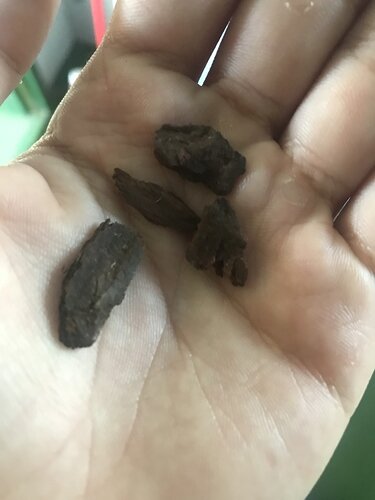btw I think is always good to ask to persons who have experience with this species
I agree, it’s always a good idea to ask advice from experienced keepers of any species. But a lot of the questions you’re asking are answered in the most common care sheets. All I recommend is to do more reading on this species, and many of the questions you’re are asking will be answered.
im asking things for vivarium and I asked the thing of the babies never noticed or saw were I did my researches
They are relatively difficult to start compare to other species some will take weeks to get started and even than may only start on scented than you have to try to transition them on unscented.
Out of the species I work with this is the one I spend the most time with when it comes to getting hatchlings ready and I refuse to sell them until they are at least 15 grams and strong feeders.
Now that’s when you breed as far at pet goes a well started animal provided with optimum husbandry will eat but females are better feeders than males, males are often picky and go through phases (months at the time) of feeding strikes.
ok before I was planning to get a female and the baby that I want to buy born in the end of June how much will take her to get 15 g?
Depend on the animal and feeding frequency their growth is very slow at first since they hatch at about 5 grams and only eat pinkies (which is mostly water and fat without real nutrience) which is why they need to be fed often at first every 3 days on average.
I don’t really calculate how long it takes when they feed on pinkies (I don’t weigh my animal all the time) but on average with a good feeding schedule they should weight 50 to 75 grams at a year (obviously weight increases quickly when they start to get more meaningful preys (fuzzies and hoppers).
I have seen owners with individuals weighing in at bareilly 25 grams at 2 years (obviously they did little research and did not understand their fast metabolism and are essential feeding often was)
25 g 2 yo???!!
I have heard very bad things about calcisand. I wouldn’t use it at all. It can cause impaction and some other health problems depending on what is living on it.
I think will mix soil with coco chip and a little bit of sand for make that texture and color
Don’t use sand. Sand is bad for them and can kill them if ingested, calcisand is just as bad. Soil also has stuff in it that is bad for them as well and holds too much humidity and will grow mold quickly. Get aspen shavings. Do not sacrifice the wellness of your animal for an aesthetic.
its a soil for reptile terrarium
im using pine wood substrate for my boas can I use it too for hognose?I know they like borrow maybe I should go for aspen?
im asking this because in one server they love sand and they hate aspen in the others is the opposite XDXD
Pine wood shavings are toxic for snakes. Aspen is your safest choice. Who ever is telling you that using sand is good for them has no concern for their snakes health.
thats a pine wood traded substrate
yeah I sand isn’t good
All the people who want to use sand usually have a lack of information, and really do not care about the well-being of their reptiles. On the other hand @stewart_reptiles breeds hognoses, and may I add beautiful healthy hognoses. Please take in consideration that it’s not about the tram always looking beautiful. If we can’t provide the best possible care within the aesthetic maybe we should should reconsider our aesthetic
Just wanted to mention that Calcisand is more dangerous, generally, than normal sand. Calcisand has much larger and sharper particles. It is not very digestible, any theoretical calcium benefits aren’t true.
Pine is toxic to all types of snakes, please use a different kind of substrate like Coco fiber or what I’m using which is reptichip
